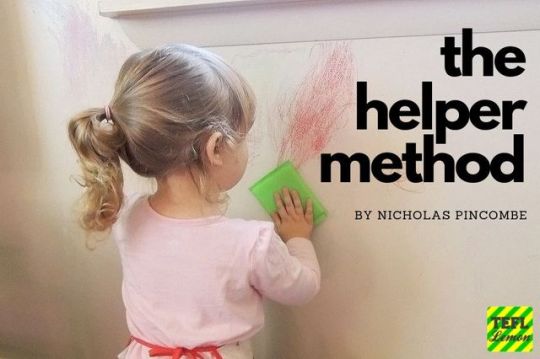Text


1. 'Looking for love' (Karen Ramirez)
2. 'Don't you want me, baby?' (Human League)
3. 'Champagne Supernova' (Oasis)
4. 'Closer' (The Chainsmokers)
5. 'Wide Awake' (Katy Perry)
The 180-Hour Higher Certificate in TESOL has 20 modules, two of which focus on how to teach grammar and how to teach tenses.
After taking our accredited online TESOL program, you'll hit English teaching out the park!
Use the coupon code: 'BIG20' to get 20% OFF the cost of our course.
13 notes
·
View notes
Text

The number of teachers earning money teaching English online is due to overtake the number of teachers working in schools within the next few years.
I look at why it is becoming so popular and what you need to start earning money teaching online.
#tefl#esl#tesol#english teaching#teaching english#tefl course#teaching#onlineteaching#teachingonline#TESOLcourse#tesolcourse
0 notes
Text
It can be confusing to know the differences between 120-hour TEFL and 180-hour TESOL courses. There is so much conflicting information about which one is the best choice for those looking to teach English at home or abroad. TEFL Lemon looks at the differences between TEFL and TESOL courses and give you our verdict.
#tefl #tesol #teflcourse #tesolcourse
0 notes
Text

Songs are a great way to teach grammar. Here are 5 songs to Use to Teach Past Simple.
https://www.tefllemoncourses.com/.../travel-n-teach-tesol...
Get 20% OFF our amazing online TESOL course at checkout. Simply use the discount code: BIG20
1 note
·
View note
Text

Language-learning anxiety is a real thing, especially when students feel that classmates around them are having an easier time learning English. I look at strategies to build confidence in your language students and bring the feel-good factor to your students.
Thinking of getting your TESOL certificate? Choose the 180-Hour Higher Certificate in TESOL, the best online TESOL program you'll find.
1 note
·
View note
Text

Teaching language can sometimes lead to lessons being too linear. Boomerang lessons provide a more student-focused approach to learning English. I look at how these lessons can help your language students.
#TEFL #TESOL
Thinking of taking a TEFL course or TESOL course? Choose our amazing 180-Hour Higher Certificate in TESOL, a globally-accredited Level 4 program.
0 notes
Text

Have you considered taking an online TESOL course for TEFL teaching? Read our blog post here and get 20% OFF the cost of the course using 'BIG20' at checkout.
0 notes
Text

Taking your regular TEFL or TESOL certificate up to the next level is a serious decision. It's hard work, expensive, and needs consideration. Having a DELTA or DipTESOL opens doors in academic department management, higher-paid jobs, as well higher recognition in the field. We lay out the difference between the DELTA and the DipTESOL.
#ELT#languageteaching#teaching english#efl#tefl#tesol#tefl course#celta#trinitydiploma#cambridgedelta
0 notes
Text

Autonomous learning is a great way to help your students achieve higher in their language learning. We explore what autonomous learning is, how it can help, and some real ways that your students can start self-directing their learning.
Learn how to be a better teacher and find a TEFL job overseas with our Higher Certificate in TESOL.
0 notes
Text

How to help ADHD students in language learning can be challenging for TEFL teachers, who sometimes lack specialised training or expertise dealing with ADHD. The disorder, which is characterised by symptoms including impulsivity, hyperactivity, and inattentiveness, affects 5–10% of the population.
0 notes
Text
5 ways to improve speaking skills in your EFL classes
Speaking is one of the most important skills for anyone to have, as it helps individuals communicate their thoughts, ideas, and emotions effectively. It is a vital part of language learning and a crucial aspect of personal and professional development. Research has shown that language learners are keen to improve their speaking skills above all other core skills when learning a language.
Here are 5 ways to improve speaking skills in your EFL classes
Encourage Active Practice: one of the most effective ways to develop speaking skills is through active practice. Encourage your students to participate in conversations, role-plays, debates, and other interactive speaking activities that require them to use the language. The key is production. This will not only help them become more confident in speaking, but it will also give them the opportunity to practice their pronunciation, intonation, and vocabulary in a fun and engaging way. Teaching Speaking is one of the core units in the Higher Certificate of TESOL, a Level 4 qualification accredited by ACTDEC.
Emphasise Pronunciation: Good pronunciation is key to effective communication, and it is important to teach this aspect of speaking from the start. To help students improve their pronunciation, teachers can use videos, audio recordings, as well as themselves as a language model. Additionally, teachers can use pronunciation exercises, such as minimal pairs or repetition drills, to help students become more aware of their pronunciation errors and correct them. Feedback is important in pronunciation, and it should be given quickly, so students can actually use the feedback.
Develop Vocabulary: A rich vocabulary is essential for effective speaking. Encourage students to learn new words and expressions by using flashcards, vocabulary games, and real-life scenarios. It is also important to teach students how to use these words in context and how to express their thoughts and feelings in a clear and concise way. Reading is a great way to build vocabulary and you can read our blog post on how to teach reading in a second language here.
Use Authentic Materials: To make speaking practice more meaningful and engaging, use authentic materials such as news articles, films, and audio recordings of native speakers. This will help students to improve their listening skills and learn new vocabulary, expressions, and cultural knowledge. Authentic materials can also be used as a starting point for conversations and discussions, allowing students to apply what they have learned in a practical and relevant way. The 180-Hour Higher Certificate in TESOL has an entire unit dedicated to using supplementary materials and the importance of using authentic materials in language teaching.
Give Feedback: Regular and on-going feedback is an essential part of the speaking-practice classes, as it helps students to identify how and where they can improve. Feedback can be provided through individual or group feedback sessions, where teachers can focus on specific areas such as pronunciation, grammar, and vocabulary usage. It is also important to provide students with positive reinforcement, such as compliments or praise, to boost their confidence and motivation.
Effective speaking skills are essential for personal and professional success, and they are important to your students. By encouraging active practice, emphasising pronunciation, developing vocabulary, using authentic materials, and providing feedback, teachers can help students become more confident and effective communicators. With the right approach and techniques, teaching speaking can be a rewarding and enjoyable experience for both teachers and students.
by Stuart Allen
Follow the TESOL and Travel blog by TEFL Lemon Courses for more great ideas here.
0 notes
Text

Teaching reading in a second language poses some pretty big challenges compared to teaching reading in L1.
We examine these challenges and give some great tips on how to teach reading in L2 more effectively, and why it is important not to neglect reading in TEFL classes.
6 notes
·
View notes
Text

Do you teach one-to-one classes? We look at 7 ways to teach better one-to-one TEFL classes to improve teaching and learning outcomes.
0 notes
Link
Teaching reading in L2 is very different to teaching reading in a first language. I discuss the reasons for this and give language teachers nine quality activities that can be used today when teaching reading.
2 notes
·
View notes
Link
Here are three no-prep speaking activities you can use when teaching the present simple. We can use the present simple for talking about habits, feelings and repeated actions, among other things.
Grammar teaching doesn't need to be boring and these three no-prep speaking activities for present simple will get lots of spoken production out of your students. These 3 no-prep speaking activities are great for present simple.
Activity #1: "Yes, I do / No, I don't" (3.24)
Activity #2: "Question me" (6:04)
Activity #3: "Questionnaire" (7:36)
TEFL Lemon offers our own 180-Hour Higher Certificate in TESOL. This is a high-quality online TESOL that you can use to become TEFL qualified and teach English at home or abroad. The course is made up of 20 amazing units which have been informed using the very latest research. It is written to be jargon-free and you'll never feel out of you depth, as the course takes trainees in small steps the whole way up to full classroom excellence.
Our courses are globally accepted and the cost includes full tutor support and the delivery of your certificate worldwide.
Subscribers to this channel get 20% OFF the course of the course. To register, simply go to:
https://www.tefllemoncourses.com/
20% OFF discount coupon code: BIG20
0 notes
Photo

Stickers and stars are classics as a reward system for young learner classes, but what happens when children grow out of these and no longer respond to this motivation?
Nicholas Pincombe looks at ‘The Helper Method’, which can give you excellent results for young learner motivation, classroom management and helping your classroom space to be as effective as possible for both learners and you!
#ClassroomManagement #GoodTeaching
0 notes
Link
Lovely A-Z flashcards, ideal for use in kindergartens and for general letter recognition. Has both lower and upper case. Free downloadable PDF!
0 notes